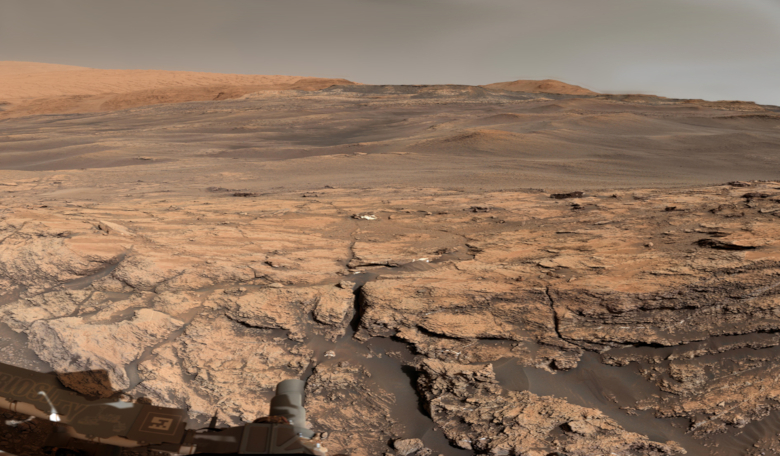A recent analysis of an intriguing group of organic compounds found by the Curiosity rover in dried-up mud in the Gale Crater, could be consistent with the presence of early life on Mars, says astrobiologist Dirk Schulze‑Makuch at Washington State University, one of the scientists behind this latest study.
The compounds are called thiophenes and on Earth, they can be found in crude oil and coal; both of which are made of compressed and superheated dead organisms and plants respectively. They can also be found in white truffles; the expensive delicacy that fetches thousands of euros a kilo, but Martian mushrooms are not expected to be behind the possible biomarkers found on the Red Planet.
The thiophenes were discovered a couple of years ago, but the source of the organic molecules could not be determined at the time.
Since then, Schulze‑Makuch and his companion Jacob Heinz at the Technische Universität in Berlin, have been working on testing some of the conceivable pathways that allowed the thiophenes to form on Mars.
Thiophenes consist of four carbon atoms, four hydrogen atoms and one sulphur atom. It is estimated that around 5 percent of organic molecules analysed by Curiosity’s Sample Analysis at Mars (SAM) instrument, contains organic sulphur.
Sulphur is a nucleophile atom, meaning it donates both of its electrons to form a bond with its reaction partner and normally, thiophenes are thought to form when the sulphur atom reacts with organic hydrocarbons at temperatures greater than 120 degrees Celsius (248°F).
Naturally volcanic and deep geological processes on Mars could provide the heat for such a reaction to occur, however most of the sulphur on Mars exists as non-nucleophilic sulphates.
While these can be transformed to nucleophilic sulphides through certain abiotic reactions, they can also arise through biological reactions.
So Schulze‑Makuch and Heinz set about examining both ways – biotic (living) and abiotic (non-living) – to determine the thiophene’s possible origin.
Their results, published in a new paper in the journal Astrobiology, suggests that biological processes, most likely involving bacteria, are behind their existence in the Martian mud and not one that involves a physical element (or truffles).
“We identified several biological pathways for thiophenes that seem more likely than chemical ones, but we still need proof,” Dirk Schulze‑Makuch said. “If you find thiophenes on Earth, then you would think they are biological, but on Mars, of course, the bar to prove that has to be quite a bit higher.”
If bacteria is the cause, then it is possible it existed more than three billion years ago when Mars’ climate was significantly warmer and wetter than the dry and cold planet we see today.
Meteorites slamming into the Martian surface could also account for the thiophenes existence, but given their location – buried in mudstones that once upon a time sat at the bottom of an an ancient lake – then biological processes are a preferred source for the compounds.
What is certain is that it is going to take further studies to determine the thiophenes true origins as Curiosity’s methods for extracting information involves breaking up samples into smaller components by blasting them with heat, leaving behind only fragments of molecules left for study.
Scientists should have a more complete picture when ESA’s Rosalind Franklin rover heads to the Red Planet later this year in July. It will be carrying a Mars Organic Molecule Analyser, or MOMA instrument, which uses a less destructive method for analysing molecules.
Even then, that might not be enough says Schulze‑Makuch. “As Carl Sagan said ‘extraordinary claims require extraordinary evidence. I think the proof will really require that we actually send people there, and an astronaut looks through a microscope and sees a moving microbe.”











